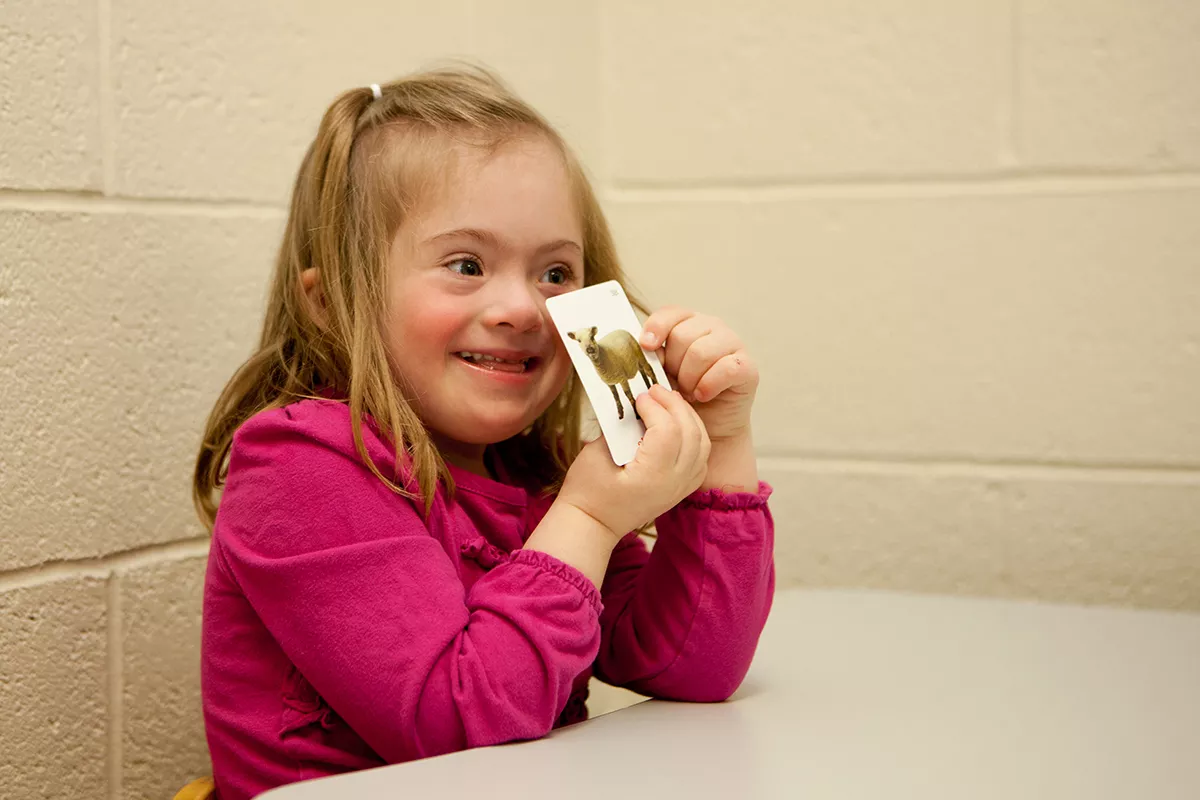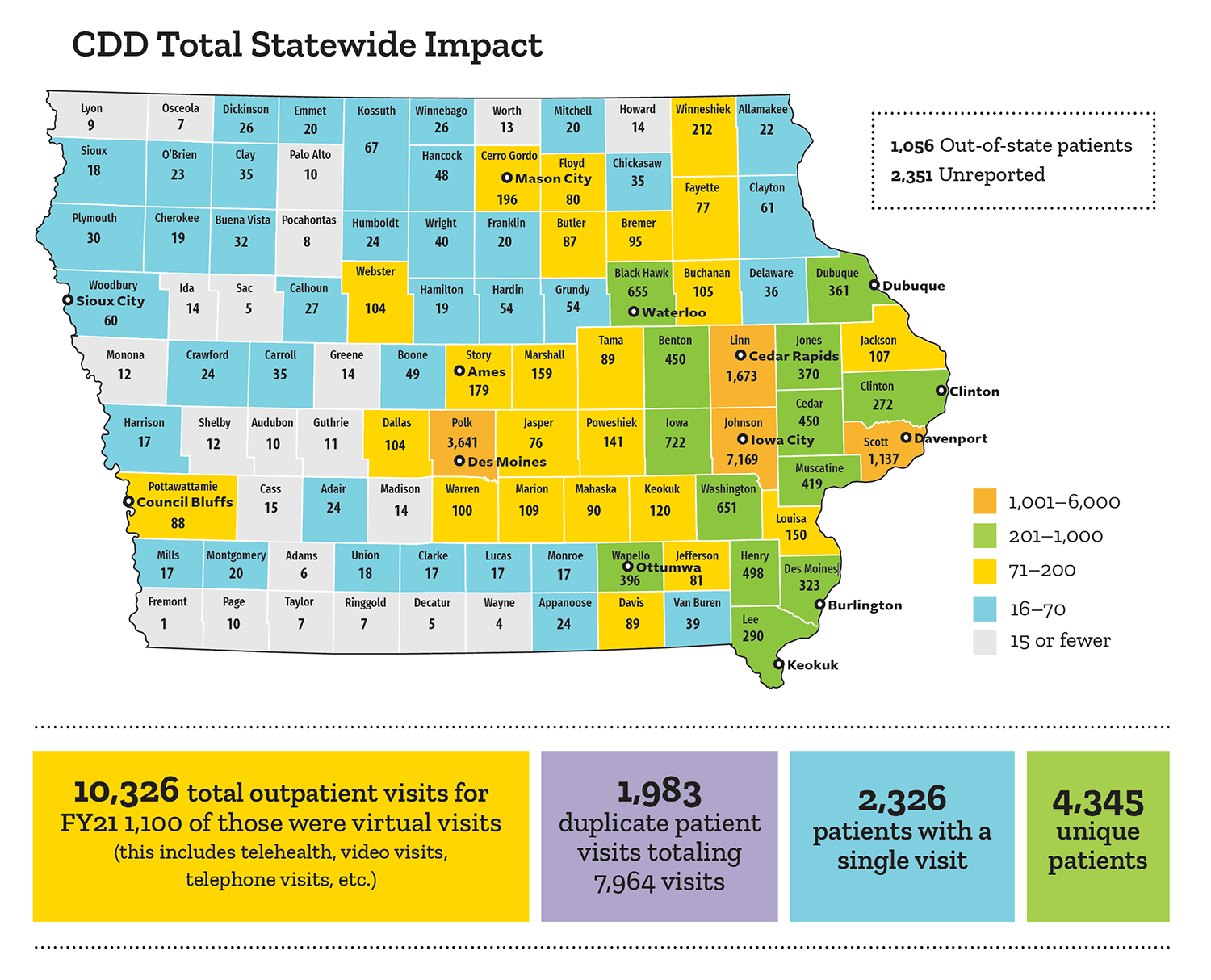‘A stronger sense of community’: new UI Center seeks to bridge gaps for Iowans with intellectual and developmental disabilities

One in six children are diagnosed with intellectual and developmental disabilities (IDD), such as autism and attention-deficit disorder, and more than 1.5% of the population is diagnosed across the lifespan, into adolescence and adulthood—an especially common trend in rural areas.
As the number of IDD diagnoses increases, University of Iowa Stead Family Children’s Hospital Center for Disabilities and Development (CDD) and the Iowa Neuroscience Institute (INI) are joining forces with other researchers, clinicians, physicians, and scientists across the UI enterprise to form a new center aimed at advancing care for Iowans with IDDs. The center will be funded over 5 years by a $6.2 million dollar grant from the National Institutes of Health.
The new center, dubbed Hawkeye Intellectual and Developmental Disabilities Research Center, or Hawk-IDDRC, will partner with CDD to integrate clinical care, teaching, and community outreach using a unique model found at only a handful of other health care institutions in the country.
“This idea really grew out of our community and an incredible need for our kids in Iowa, and their families, who are facing the challenges of neurodevelopmental disorders,” says Ted Abel, PhD, co-director of Hawk-IDDRC, director of the INI, and professor and DEO of neuroscience and pharmacology in the UI Carver College of Medicine.
Translating research into clinical care
The Hawk-IDDRC will integrate basic and clinical research across the lifespan—from conception to adulthood—focusing on the prevention, diagnosis, and treatment of IDDs. Children and their behaviors change over time, Abel says, so physicians benefit from tracking their trajectory and the diverse range of development among different children.
The lifespan approach is an essential theme of the center—and something Abel says the UI is uniquely qualified to do because patients often live in Iowa and are easy to follow for a lifetime. It’s unusual to have a large medical center of this caliber and such a connection to a broad community over generations, Abel says.
“What I hope is that we’re able to help individuals realize their potential—and realize that potential across their life,” Abel says.
Because transitioning from childhood to adult IDD services is relatively difficult, there is a critical need to better understand how to prevent, diagnose, and more adequately treat symptoms of IDD across the lifespan.
“There are huge demands for resources to help assist these children and families and even adults, because more of these children that have been diagnosed with autism are reaching adolescence and adulthood,” says Lane Strathearn, MD, PhD, co-director of Hawk-IDDRC, physician director of CDD, and professor of pediatrics—developmental and behavioral pediatrics in the UI Carver College of Medicine. “And those needs don’t just disappear when an individual becomes an adult, so it’s really a broad and all-encompassing need that we’re trying to better understand.”
Because IDDs are more common among adults in rural communities, where resources and research opportunities are limited, the Hawk-IDDRC is seeking to improve opportunities of research, education, and clinical care statewide.
A massive statewide impact

The UI Center for Disabilities and Development (CDD) already makes a massive statewide impact itself, helping Iowans from all 99 counties. In fiscal year 2021, CDD completed over 10,000 outpatient visits for 4300 patients from across Iowa and nearby states. These numbers include patient-care visits, information and referrals, community-based technical assistance, consultation, to outreach.
“I hope we will build bridges of communication across the university, and with the community at large,” Strathearn says. “So that we’re doing important research that doesn’t just benefit scientists, it actually benefits the community, and that we’re able to communicate the results of that research in a way that is accessible to family members and community practitioners—to teachers, to therapists—so they can utilize that information in a way that helps families.”
“Elements of the IDDRC will be led by some of the best researchers in the country that are here at the UI, and they will be helping to direct the attention of researchers to the specific needs of families with intellectual and developmental disabilities,” Strathearn says.
The goal is to provide not only individuals and families, but their local physicians, with the tools to respond to IDD diagnoses. When people receive a diagnosis of developmental disability, families are often uncertain of how to respond or proceed, Abel says.
“It takes a community to support each of us, if you think about it,” he says. “Not just those of us with physical, intellectual, or emotional challenges, but everybody. That’s something I hope we can develop—a stronger sense of community for these families.”